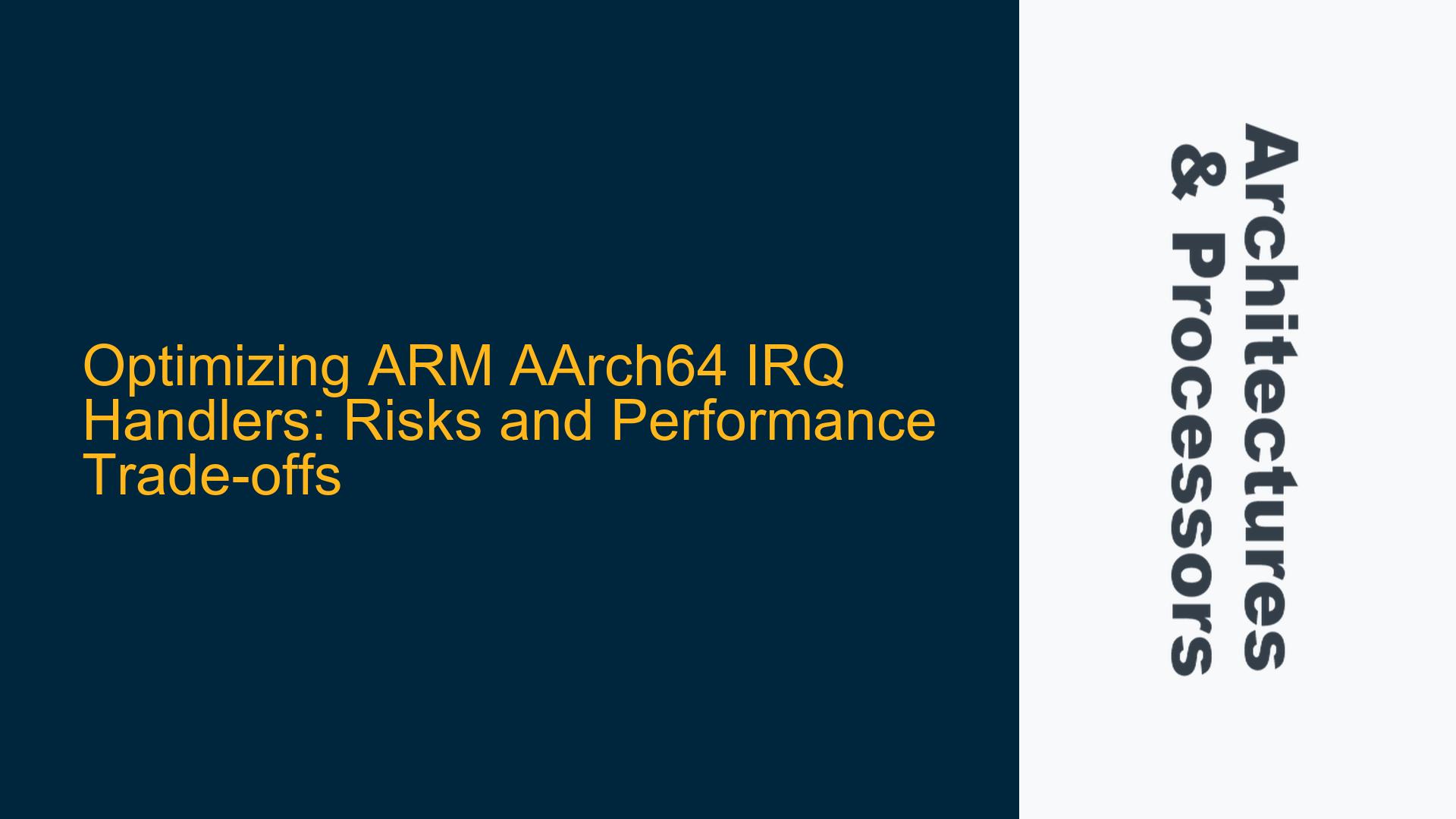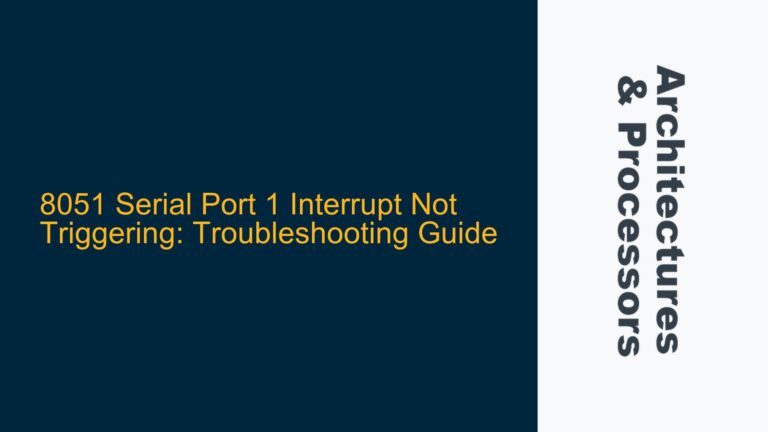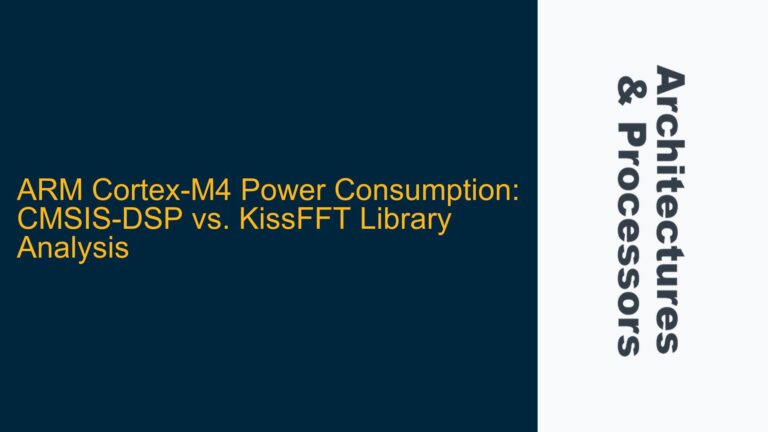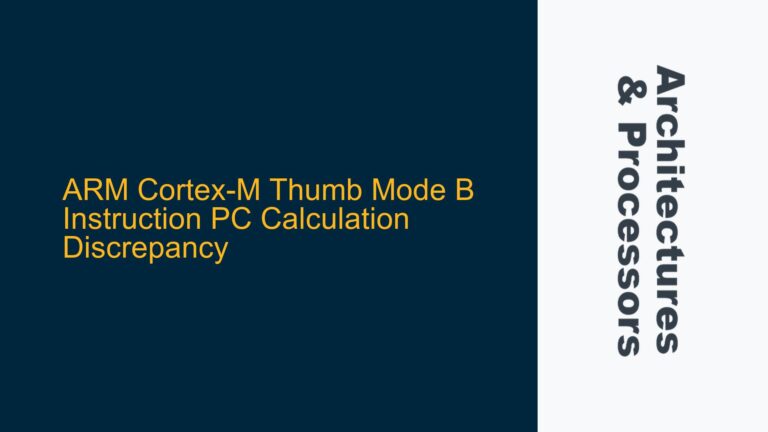ARM AArch64 Exception Vector Table Structure and IRQ Handler Placement
The ARM AArch64 architecture defines a fixed exception vector table with specific offsets for different exception types, including IRQ (Interrupt Request) and FIQ (Fast Interrupt Request). Each vector in the table is 0x80 bytes in size, providing a limited space for the handler code. The IRQ vector is located at offsets 0x80, 0x280, 0x480, and 0x680, depending on the execution mode (e.g., EL1, EL2, EL3). The FIQ vector follows immediately after the IRQ vector at offsets 0x100, 0x300, 0x500, and 0x700.
The primary purpose of the vector table is to provide a deterministic and low-latency entry point for exception handling. The small size of each vector (0x80 bytes) is intentional, as it encourages developers to place minimal code in the vector itself and branch to a more comprehensive handler elsewhere in memory. This design ensures that the vector table remains compact and that the exception handling logic is modular and maintainable.
However, some developers attempt to optimize interrupt latency by expanding the IRQ handler into the FIQ vector space. This approach involves using the 0x80 bytes allocated for the FIQ vector to extend the IRQ handler, effectively creating a 0x160-byte space for the IRQ handler. While this may reduce the number of instructions executed by eliminating a branch, it introduces significant risks and trade-offs that must be carefully considered.
Performance Gains vs. System Stability Risks
The primary motivation for expanding the IRQ handler into the FIQ vector space is to minimize interrupt latency. By avoiding a branch instruction, the processor can begin executing the IRQ handler immediately after fetching the exception vector. This can save a few clock cycles, which may be critical in real-time systems with stringent timing requirements.
However, the performance gains from this optimization are often marginal. Modern ARM processors feature highly efficient branch prediction and instruction prefetching mechanisms, which mitigate the latency cost of branching to a separate handler. Additionally, the actual interrupt handling logic typically involves saving and restoring processor state, which dominates the overall latency. The elimination of a single branch instruction is unlikely to have a measurable impact on the overall interrupt response time.
On the other hand, expanding the IRQ handler into the FIQ vector space introduces significant risks to system stability. The FIQ vector is reserved for fast interrupts, which are higher-priority than IRQs. If an FIQ occurs while the processor is executing the extended IRQ handler, the system will attempt to jump to the FIQ vector, which now contains part of the IRQ handler code. This will almost certainly result in undefined behavior, potentially crashing the system or corrupting critical data.
Furthermore, this optimization assumes that FIQs will never be used, which is not a safe assumption in many systems. Drivers or other software components may enable FIQs for specific purposes, and the system must be able to handle them correctly. By repurposing the FIQ vector space, the system becomes fragile and difficult to maintain, as any use of FIQs will lead to catastrophic failures.
Best Practices for IRQ Handler Implementation and Optimization
To achieve optimal interrupt handling performance while maintaining system stability, developers should adhere to the following best practices:
-
Minimize Code in the Vector Table: The exception vector table should contain only the essential instructions required to branch to the main handler. This ensures that the vector table remains compact and that the handler logic is modular and maintainable. For example, a typical IRQ vector might contain a single branch instruction to the main IRQ handler.
-
Use Efficient Branch Instructions: Modern ARM processors support efficient branch instructions, such as
BandBL, which have minimal latency. These instructions should be used to jump to the main handler, as they are optimized for performance and do not significantly impact interrupt latency. -
Leverage Hardware Features: ARM processors include features such as branch prediction and instruction prefetching, which reduce the cost of branching. Developers should ensure that these features are enabled and configured correctly to maximize performance.
-
Avoid Repurposing Reserved Vector Space: The FIQ vector space should never be repurposed for other exception handlers. This ensures that the system can handle FIQs correctly if they are enabled, and it prevents undefined behavior that could lead to system crashes.
-
Profile and Optimize the Main Handler: Instead of focusing on the vector table, developers should profile and optimize the main IRQ handler to reduce its execution time. Techniques such as reducing the number of instructions, minimizing memory accesses, and using efficient algorithms can have a much greater impact on interrupt latency than eliminating a single branch instruction.
-
Consider Using FIQs for Critical Interrupts: If the system has critical interrupts that require the lowest possible latency, developers should consider using FIQs instead of IRQs. FIQs have a dedicated vector and can be handled without branching, providing the lowest possible latency for critical tasks.
By following these best practices, developers can achieve optimal interrupt handling performance while maintaining system stability and avoiding the risks associated with repurposing reserved vector space. The marginal performance gains from expanding the IRQ handler into the FIQ vector space are not worth the significant risks to system stability and maintainability. Instead, developers should focus on optimizing the main handler and leveraging the hardware features provided by modern ARM processors.
Conclusion
The ARM AArch64 exception vector table is designed to provide a compact and efficient mechanism for handling exceptions, including IRQs and FIQs. While it may be tempting to optimize interrupt latency by expanding the IRQ handler into the FIQ vector space, this approach introduces significant risks to system stability and maintainability. The performance gains from this optimization are marginal, and the potential for catastrophic failures far outweighs any benefits.
Developers should instead focus on minimizing the code in the vector table, using efficient branch instructions, and optimizing the main IRQ handler. By adhering to these best practices, they can achieve optimal interrupt handling performance while maintaining a robust and maintainable system. The ARM architecture provides powerful features for efficient exception handling, and developers should leverage these features rather than resorting to risky optimizations that compromise system stability.






